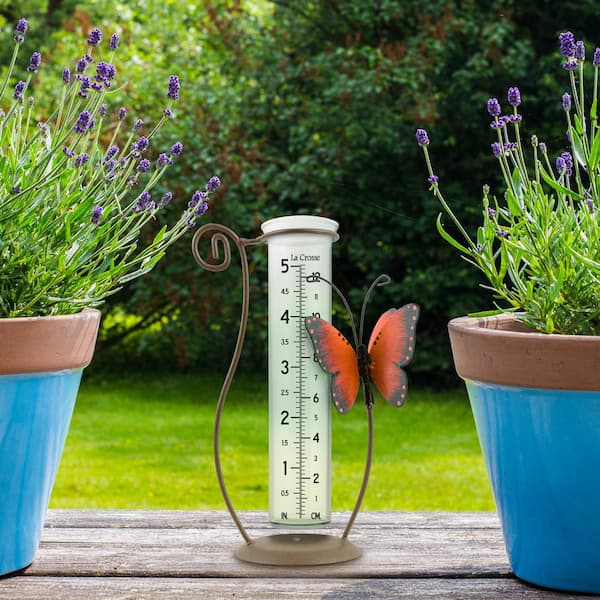The Rain Gauge: Figuring Out Rainfall Patterns and Enhancing Weather Condition Understanding
The Rain Gauge: Figuring Out Rainfall Patterns and Enhancing Weather Condition Understanding
Blog Article
Do It Yourself Rain Scale: Simple Steps to Make Your Own
Are you interested in tracking rains in your area? Producing your very own DIY rainfall gauge is a simple and efficient way to gauge and tape precipitation. With simply a few typical products and some basic actions, you can conveniently build your very own rainfall gauge in your home. In this overview, we will offer you with a detailed procedure to help you produce your very own rainfall gauge. No requirement for any type of specialized expertise or equipment - this job can be finished by any person. By following these basic guidelines, you will certainly have a trustworthy device to measure rainfall and add to your understanding of the regional climate patterns. So, allow's get started on making your DIY rain gauge today!
Gather Materials
To begin constructing your Do it yourself rainfall scale, collect all the required products making use of a thorough listing of items. Having the right products on hand will ensure the successful development of your rainfall gauge and enable for exact measurements of rainfall. Gathering these products ahead of time will improve the building and construction process and guarantee that you have whatever you require to develop your own DIY rain gauge.
Prepare the Container

Mark the Measurement Increments
To properly determine the amount of rainfall, accurately noting the measurement increments on your do it yourself rain scale is crucial. Without accurate and clear markings, it would certainly be tough to determine the specific amount of rains collected in your rainfall gauge. Right here are the steps to mark the dimension increments on your rainfall scale.
First, pick the unit of dimension that you intend to utilize. The most typical devices for determining rains are millimeters and inches. Once you have picked the system, make use of a permanent pen or waterproof paint to mark the increments on the side of your rainfall gauge. For inches, you can note every quarter inch or every half inch, depending on your preference. For millimeters, you can note every 10 millimeters or every 20 millimeters.
When noting the increments, it is important to make sure that they are equally spaced and plainly visible. Use a ruler or determining tape to make certain precision and consistency. Additionally, see to it that the markings are resistant to fading or abrading, as direct exposure to the components might create them to deteriorate in time.
Location the Rain Gauge Outdoors
The rainfall scale must be put outdoors to accurately collect rains information. The place selected for the rain scale must be open and complimentary from any type of obstructions that can possibly impact the measurement of rains. The see this website Rain Gauge.
Furthermore, it is important to position the rainfall gauge on a stable surface area, such as a degree ground or a durable post. This will certainly stop any activity or tilting of the scale, which could bring about unreliable measurements. It is additionally suggested to prevent placing the scale near any type of resources of man-made water, such as sprinklers or water drainage systems, as this might conflict with the precision of the measurements.
Screen and Record Rain Data
Routine monitoring and recording of rains data is crucial for precise information analysis and analysis. By tracking rains dimensions, you can get valuable insights right into weather condition patterns, environment trends, and water source management. To successfully monitor and tape rains data, it is necessary to establish a routine and keep consistent methods.
To start with, guarantee that your rainfall scale is positioned in an open area far from barriers such as trees or buildings that may block rains. Additionally, ensure the rainfall gauge is level and safely secured to prevent any type of activity that can pop over to these guys affect the accuracy of the dimensions.

When taping the rains data, it is essential to keep in mind the date and time of each measurement. Make use of a ruler or a gauging stick to identify the rains deepness in the rain scale, and document this info accurately.
To make sure the accuracy of the measurements, it is recommended to clear the rainfall gauge after each recording. This will certainly prevent any kind of overflow or dissipation from influencing subsequent measurements.
Conclusion
Finally, producing a DIY rain scale is a easy and practical means to keep an eye on and tape-record rains data (The Rain Gauge). By adhering to the steps laid out in this short article, you can conveniently gather products, prepare the container, mark the dimension increments, and place the rain scale outdoors. Consistently keeping an eye on and tape-recording image source rains information can offer beneficial information for numerous purposes
Having the ideal products on hand will make sure the effective creation of your rainfall scale and allow for precise dimensions of rainfall.To precisely gauge the quantity of rainfall, precisely noting the dimension increments on your DIY rain scale is essential.The rain scale need to be placed outdoors to precisely gather rains information. The location selected for the rainfall scale need to be complimentary and open from any kind of blockages that could potentially affect the measurement of rains.In final thought, developing a DIY rainfall scale is a simple and useful means to monitor and tape-record rainfall data.
Report this page